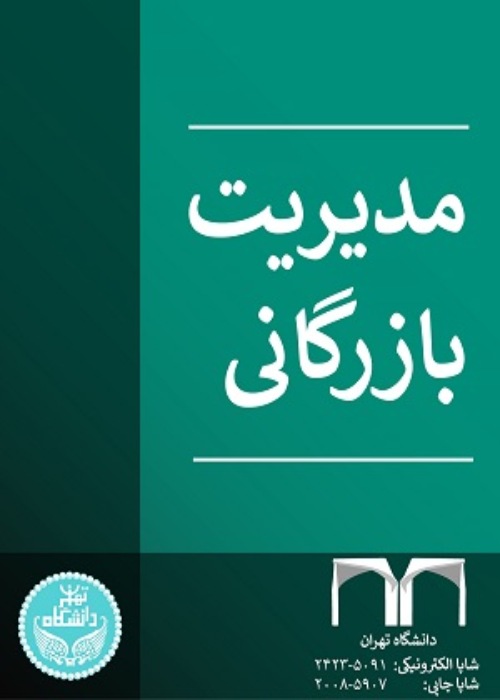Modeling Corporate Brand Identity in the Banking Industry
Despite the importance and significant role that branding can play for business-to-business (B2B), most research has been conducted in the context of business to consumer (B2C). Corporate banking is considered as one of the relatively new areas that has occurred in banking industry in the the country which occurs in B2B business model. After reviewing the related literature, the researcher can claim that no research has been conducted on the elements and components of corporate brand identity in the banking industry, especially in Iran. Therefore, this study aims to identify the factors affecting the corporate brand identity in the context of corporate banking and explore the relationships between these factors.
The present study aims to discover and identify the factors affecting the corporate brand identity, and then to present a causal structural model of these factors in the context of corporate banking. Therefore, the present research falls into the category of applied research. Given that this research seeks to describe the elements and dimensions of corporate brand identity and then to describe the causal relationships between them, this study is discpriptive in terms of research method. The present study is a survey research which used the opinions of 18 experts in the field of corporate banking. Identification and selection of the individuals was done using non-statistical and available methods. Content analysis method was used in order to extract the factors and elements of corporate brand identity, and then interpretive structural modeling (ISM) method was used in order to identify the relationships between the main categories. From this perspective, this research falls into the category of consecutive exploratory mixed research.
According to the findings of this study, the factors affecting the corporate brand identity were defined in the form of 13 main categories including strategy, market orientation and market focus, organization, strategic brand analysis and market research, organizational culture, stakeholder relationship management, organizational infrastructure and structure, organizational competencies and capabilities, human capital management system, brand personality, brand visual identity, brand communication, brand reputation, brand proposed value as well as 41 sub-categories. In addition, there is a causal relationship between these factors according to the research results.
The brand identity is formed based on strategy, culture, infrastructure and structure, competencies and capabilities, and human capital management system. These factors, which are also involved in the stimulus cluster, are considered as the most important factors or in other words, the underlying factors in forming the company brand identity. Following these five factors, market orientation and market focus at the fourth level are the other important factor that affect the formation of the company brand identity. Regardless of the market and market orientation, it is obvious that organizations cannot identify the needs of the market properly and cannot form a coherent and consistent identity in order to fulfill their missions. At the third level, there are two factors of stakeholder relationship management as well as strategic brand analysis and market research which are influenced by market orientation and market focus. In fact, it is the market image that requires companies to seek brand analysis and market research in order to form and develop their brand position accordingly. At the second level, the factors related to brand visual identity, brand communication, and brand value are influenced by the factors belonging to level three, four, and five. These three factors all affect and also contribute to the realization of each other. Finally, all of these factors can affect the two factors of level five, namely brand personality and brand reputation. In order to complement the results which are obtained from the ISM hierarchical model, organizational strategy, market orientation and focus on organizational market, organizational culture, infrastructure and organizational structure, organizational competence and capabilities, and human capital management system which are also involved in the stimulus cluster are the result of the MICMAC analysis. The factors in the stimulus cluster are highly effective but less affected by other elements. As a result, the priority is given to the changes in these factors in order to change the status of brands. Other factors are also included in the category of dependent elements, which indicate their high effectiveness.
- حق عضویت دریافتی صرف حمایت از نشریات عضو و نگهداری، تکمیل و توسعه مگیران میشود.
- پرداخت حق اشتراک و دانلود مقالات اجازه بازنشر آن در سایر رسانههای چاپی و دیجیتال را به کاربر نمیدهد.



